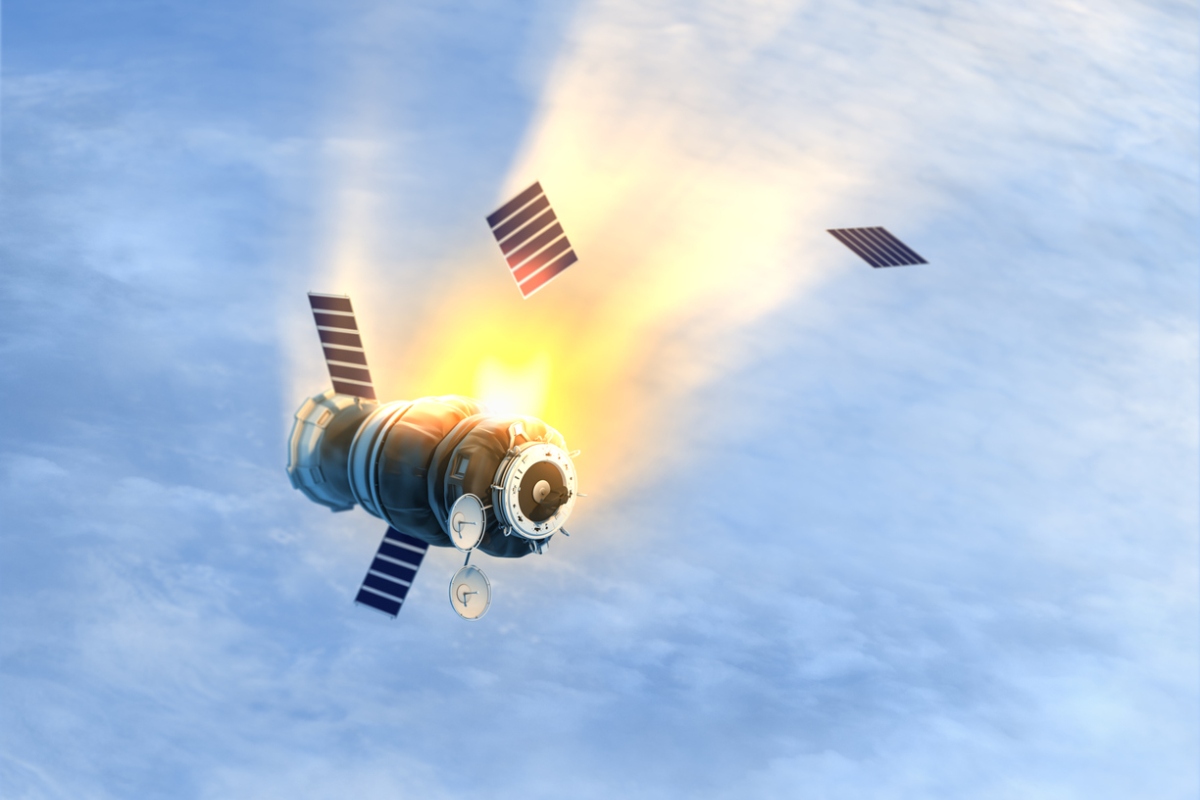A vote for BJP will ensure Tripura’s prosperity: PM to Agartala electorate
Modi claimed that the North East policy of the Congress and the Communists was a Loot East policy, which the BJP buried 10 years back and initiated an Act East Policy.
Though the message was clear to all of India’s adversaries, PM Modi assured the global community that the technology will not be used “against anyone”.

(Photo: iStock)
Prime Minister Narendra Modi on Wednesday announced that India has entered an elite league of space power nations with its successful test of an anti-satellite missile (ASAT).
“Mission Shakti (the official name of the test) was a resounding success,” the PM said in a live address to the nation that came at a very short notice.
“India has become the fourth country in the world to become a space power which means that it now has the capability to take out an enemy satellite in space,” a clearly elated PM Modi said.
Advertisement
The PM said that the indigenously-built missile took out a target Indian satellite in the Low Earth Orbit (LEO) giving the nation a decisive edge over any enemy activity in space.
The entire operation from the firing of the missile to the destruction of the target took just three minutes.
Read More | Mission Shakti a major success, India now an elite space power: PM Modi
Here are a few facts around what we know so far about Mission Shakti and ASATs:
Mission Shakti
Mission Shakti was carried out on 27 March. An Indian ASAT destroyed a micro satellite which was launched by the ISRO on 24 January this year. The target was 300 kilometres from the missile launch vehicle.
The DRDO’s Ballistic Missile Defence interceptor was used for the mission, which is part of the ongoing ballistic missile defence programme.
The MEA said that the capability achieved through the ASAT test provides “credible deterrence against threats to our growing space-based assets from long range missiles, and proliferation in the types and numbers of missiles”.
DRDO chairman G Satheesh Reddy told ANI that India has now “mastered anti-satellite capability and has shown that we can hit satellites at long ranges with a few centimetres accuracy”.
How many countries before India successfully tested ASAT?
Three – the US, Russia and China.
The first successful ASAT test
Soviet Union conducted the first successful ASAT test in February 1970. Since then USSR/Russia have tested the ASAT numerous times with the last three reported in 2018.
The US was the second country to achieve an ASAT success
Though the US was the first to start working on ASAT technology – in 1958, tests kept failing and the project was kept on the backburner till the Soviets started experimenting with it. The US achieved the feat as late as 1985 when a modified F-15 Eagle vertically went upwards to launch an ASAT that intercepted a target satellite. The US, however, cancelled the programme in 1988 before reviving it with a successful test from the sea in 2008.
China’s test in India’s vicinity
Less than 500 kilometres to the east as the crow flies from India’s border with China at Arunachal Pradesh is Xichang, a city in the Liangshan Yi Autonomous Prefecture of China. It was from here in 2007 that Beijing conducted its first successful ASAT test. China is believed to be preparing for more ASAT tests that can target satellites deep in space.
What is a Low Earth Orbit?
The LEO is the lowest in terms of altitude classification of orbits. An LEO is below 2,000 km.
Above the LEO is Medium Earth Orbit (MEO), which is a geocentric orbit that begins from 2,000 km above the Earth to approximately 20,650 kilometres.
Above the MEO is Geosynchronous orbit (GSO) which can be upto an altitude of 35,786 km.
Beyond the GSO is the High Earth Orbit (HEO).
Why is LEO important?
All the spy satellites use LEO as the preferred orbit because it provides the closest visual of the Earth’s surface and allows a satellite to complete one revolution of the planet in about 90 minutes.
Who else is developing ASAT?
Israel is believed to be developing the ASAT through its operational Arrow 3 anti-ballistic missile system. The exoatmospheric hypersonic missile has a range of 2,400 kilometres.
Are ASATs a threat to space?
The Chinese test of the ASAT in 2007 left behind debris of the target satellite whose speed of revolution threatened other satellites and space missions. India said that the test one done in the lower atmosphere to ensure that there is no space debris and whatever is generated will decay and fall back onto the earth within weeks.
But Alfonso Cuarón’s 2013 Academy Award winning movie Gravity actually showed how dangerous space debris can be. In the film, the destruction of a satellite triggers high-velocity debris items which crash into a space shuttle in Earth’s orbit killing all but one crew member of the mission.
What India told the world community
Though the message was clear to all of India’s adversaries, PM Modi assured the global community that the technology will not be used “against anyone”.
“This (technology) is to strengthen the defence of a fast-growing India. This test does not violate any international law or treaty. We are against arms race in space,” the PM stressed, adding, “Our objective is to ensure the security of the 130 crore people of our country. Thus a powerful India is necessary for peace. We do not intend to create an atmosphere of war.”
Read More | Mission Shakti not to threaten any country, aims to ensure national security: MEA
“The primary goal,” the PM said, “is India’s security, technological advancement and economic progress. Mission Shakti ensures the safety of these goals.”
Advertisement